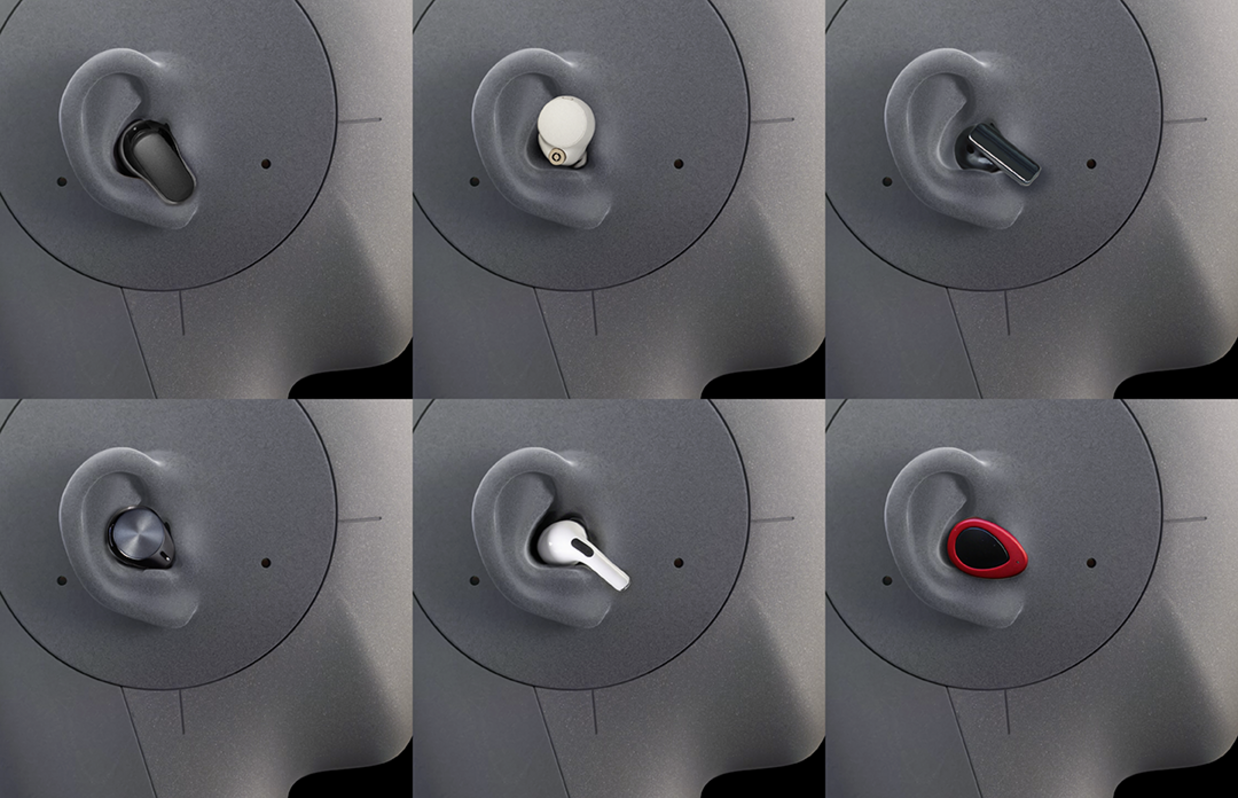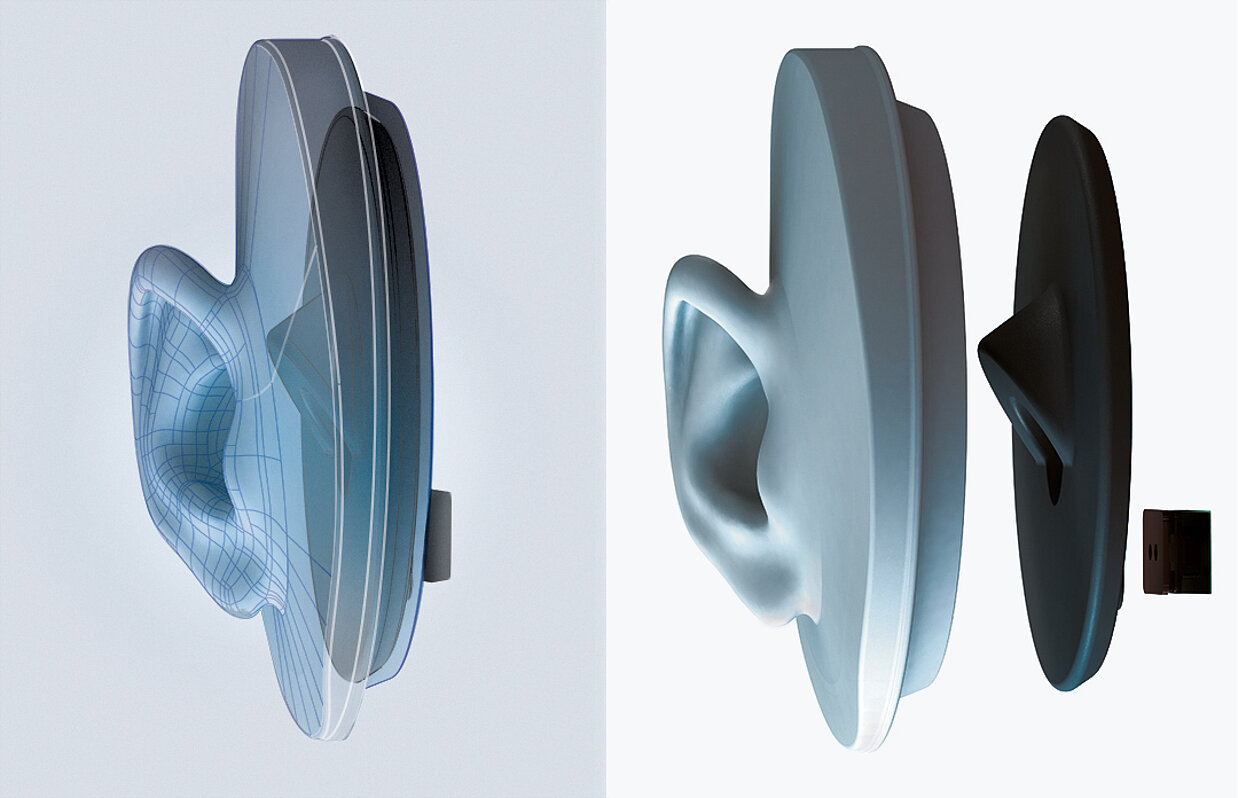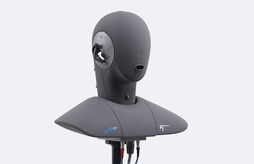Holistic In-Ear Headset Testing
Taking bone conduction into account simply makes your product better. Bone conduction sensors in in-ear headsets allow for better noise reduction and significantly help improve the speech signal quality in headset communication. But testing bone conduction-sensing headsets by simulating respective signals has, so far, been impossible due to the lack of appropriate equipment. Therefore, testing such devices today does not always yield meaningful results.
A game-changer for in-ear headset testing
HEAD acoustics is changing that. We provide a realistic simulation of the human structure-borne voice signal for testing suitable in-ear headsets: A bone conduction actuator, integrated into the HEAD acoustics HEL/HER 4.4 Artificial Ear, can induce structure-borne sound in our Head and Torso Simulator HMS II.3 ViBRIDGE. ACQUA and labCORE generate the equalized signal for both the Artificial Mouth and the HEL/HER 4.4 ViBRIDGE pinnae.
Understanding the human structure-borne voice transmission
Understanding the human structure-borne voice transmission of a user's voice to their ear is paramount. We conducted thorough measurements of the individual spectra of many talkers' airborne and structure-borne sound and created an overview of the spread of individual differences, allowing us to derive average transfer functions that we can use to create a realistic structure-borne sound simulation.
Simulating the human structure-borne voice transmission
By extending the artificial head HMS II.3 LN-HEC with an actuator reproducing structure-borne sound in the artificial ear, we can now generate a realistic structure-borne voice signal jointly with the airborne transmitted voice, making testing of headsets with structure-borne sound sensors ultimately holistic.
Why headset manufacturers must care about bone conduction testing
There are good reasons for headset manufacturers to use bone-conduction sensors and test them holistically: Better separation of the talker's voice from noise or concurrent talkers improves noise cancellation and speech quality in noisy environments. Perfect voice detection enhances control of echo cancellation and other signal processing in headsets, and transmitting the structure-borne voice leads to a perfectly noise-canceled voice signal.
The complete test solution
As you can see, structure-borne sound simulation is crucial when testing respective headsets. Only with the complementing simulation of airborne and structure-borne sound generated by the human voice can it be possible to comprehensively evaluate and optimize headsets in different conversational situations. In combination with lab-based background noise simulation and dedicated test suites for our analysis system ACQUA, the upgradeable ViBRIDGE technology offers the "all–in–one" solution for…
- testing
- optimizing
- validating
…in-ear headsets and other in-ear devices using bone-conduction sensors.






